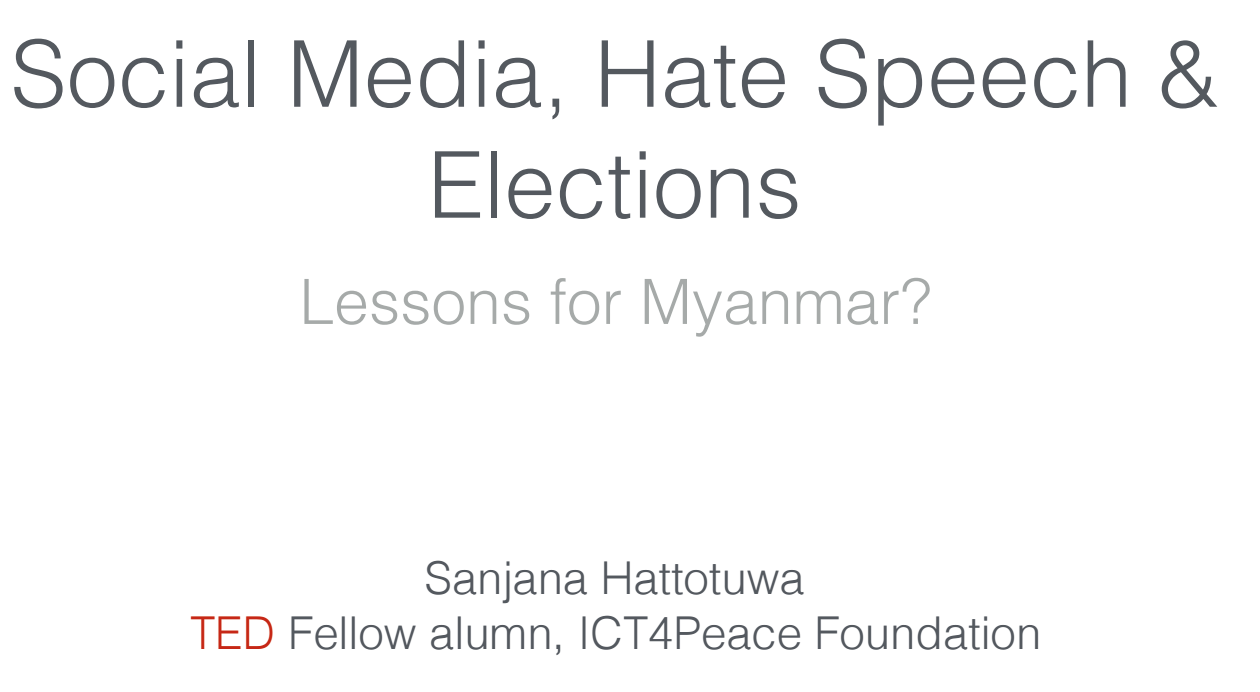At the invitation of the Myanmar Information Management Unit (MIMU), Sanjana Hattotuwa conducted an information presentation on hate and dangerous speech monitoring plus counter-speech strategies, as well as social media strategies during and in response to elections. Both were based on his experience in the strategic design of content and deployment of social media apps, services and platforms against hate speech as well as in the service of election monitoring and voter education.
The discussion, slated for one and a half hours but lasting over two, covered a number of issues anchored to the topics of the presentation in the context of Myanmar, and the historic elections that will be held on the 9th of November.
Participants discussion, inter alia, the ways through which technology could help in voter and civic education, the challenges around the design of content and the appropriation of technology in a low bandwidth environment, the challenges around the increasing use of mobile telephony in responding to hate speech, the need to identify stakeholders and key audiences in frameworks of engagement around hate speech monitoring and counter-speech production.
Sanjana’s presentation looked at election violence monitoring and voter education (using social media over mobile platforms as well) conducted in particular during the Presidential Election on 8th January and Parliamentary Elections held on 20th August 2015 in Sri Lanka. Alongside this Sanjana also briefly spoke about the on-going research into hate and dangerous speech on Facebook fora.
At the end of his presentation, the submission was made that what was often lacking in civil society was not the technology but the imagination to embrace technology in the service of peacebuilding, civic participation, democracy and governance. To this end, simple strategies to target audiences over Facebook, plus Katha – a new app from Sri Lanka allowing for more persistent and persuasive conversations using audio / podcasts on mobile devices – were showcased, in addition to the use of Instagram in Yangon, as examples of how more serious, strategic and sustained use of social media could be engineered to combat the rise of violence.
Sanjana’s presentation can be downloaded as a PDF here.

